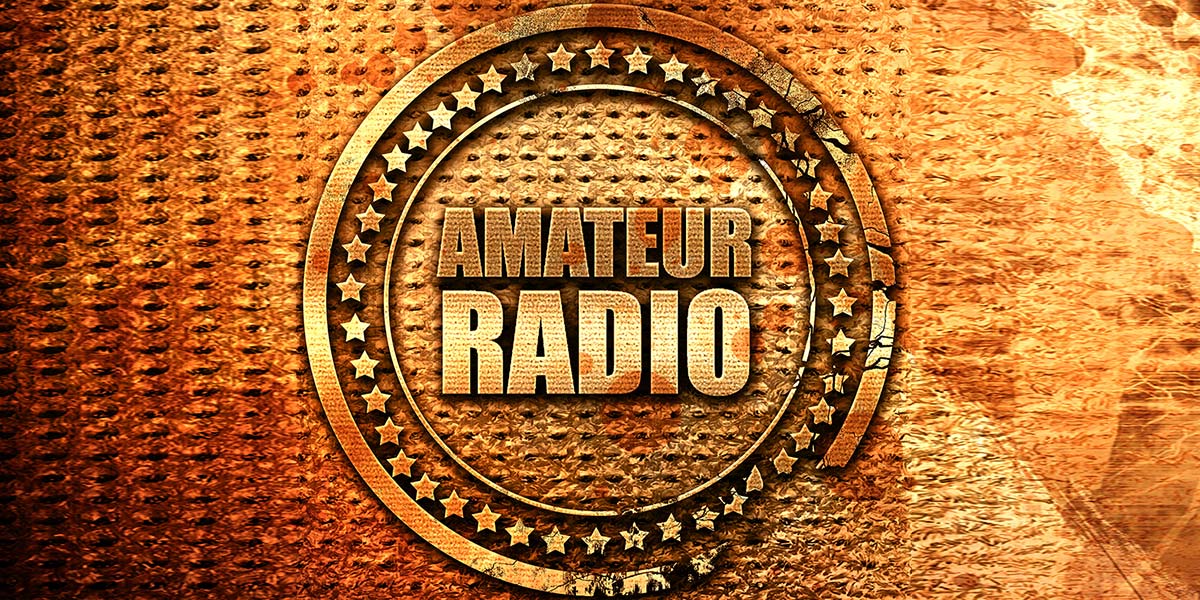Ham radio is a fertile source of inspirations!
There are a lot of technologies that got a start on some ham’s wireless workbench. Ham radio almost demands tinkering and inventing. Some creations get no farther than a one-time project, while others become the basis for companies and industries. Along the way, a ham’s career can become intertwined with those inventions. This month, we’ll meet some of both – the ham and the technology he puts to work around the world.
The Ham
Meet Toni Linden OH2UA (Figure 1). He grew up in Finland and is currently living in Copenhagen running his communications company, KNL Networks (knlnetworks.com). KNL’s specialty is worldwide communications for maritime and public safety customers. There are lots of radio vendors out there, but Toni’s background in ham radio led him to a novel combination of propagation know-how, cognitive radio, and automated receiver networks. It’s pretty neat!
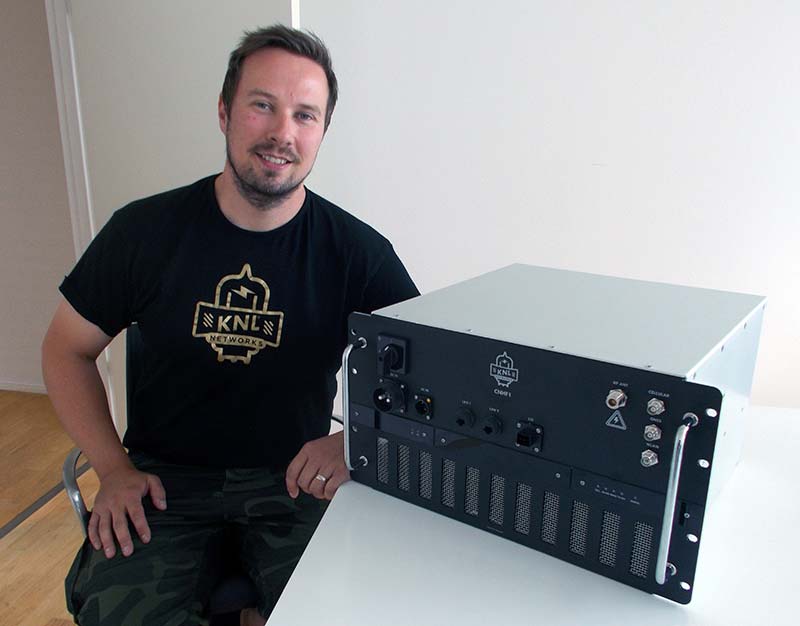
FIGURE 1. Toni Linden OH2UA credits ham radio with getting him started on the road to becoming CEO of KNL Networks: a world-wide communications company. He also likes mountain biking and auto racing — you’re in fast company when Toni’s at the wheel! With a company to run and a two and four year old at home, Toni’s ham radio time is limited, but he joins in the radiosport fun when he can.
He got started young, receiving a license in 1995 when he was about 15. His interest began with friends using CB radio (yes, they have that in Finland too!). While they were operating, the occasional DX station (DX means “distant”) would pop in from Africa or South America or the US or somewhere in Asia. Toni wondered, “How does that work?” and the die was cast.
Toni soon joined the community of Finnish hams focused on competitive ham radio, also known as “radiosport” or “contesting.” The Finnish contesters are serious about their radio. Some of the biggest stations in the world are there, including for a time the world’s largest-ever ham radio antenna at OH8X, Radio Arcala (www.radioarcala.com). It was so tall you could base jump from it! (On the Radio Arcala page, select Station > Towers and Antennas and scroll down to Tower 7.) The tower collapsed due to rotator failure during a winter storm, so, in ham radio parlance, “It must have been big enough!”)
While contesting, Toni learned his operating skills and a lot about HF (high frequency, 3 to 30 MHz) propagation. (Ham’s Wireless Workbench columns in the May 2016 and July 2016 issues go into some detail about radio propagation.) Later, he set records at the Radio Arcala stations in the Azores (CU2X and CR2X) and learned more about propagation at a more southerly location. All this was building up a model in his head about how propagation “works,” changing daily, seasonally, and yearly with the sunspot cycle.
The Opportunity
The maritime industry is another community that uses world-wide communication every day. Certainly, they can use satellites while running up a big bill, however, satellite channels aren’t always available. Ships are also traveling at higher and higher latitudes as more ice-free routes open up but satellite coverage is a lot spottier near the poles. Elsewhere in the spectrum, there are point-to-point HF channels but propagation changes from minute to minute, making it hard to stay in contact. Isn’t there a better way?
In a world-wide HF contest, operators quickly learn to “follow the bands” to maintain the largest possible “footprint” in desirable regions with lots of stations to work. Hams use propagation prediction tools like VOACAP (www.voacap.com) to plan and predict when contacts can be made on which of their HF bands and to what areas. Figure 2 shows a typical footprint for an amateur station (the red dot) in Missouri operating on the 14 MHz band. Marine HF channels on 12 and 16 MHz (www.navcen.uscg.gov/doc/rtchan.txt) would have similar coverage.
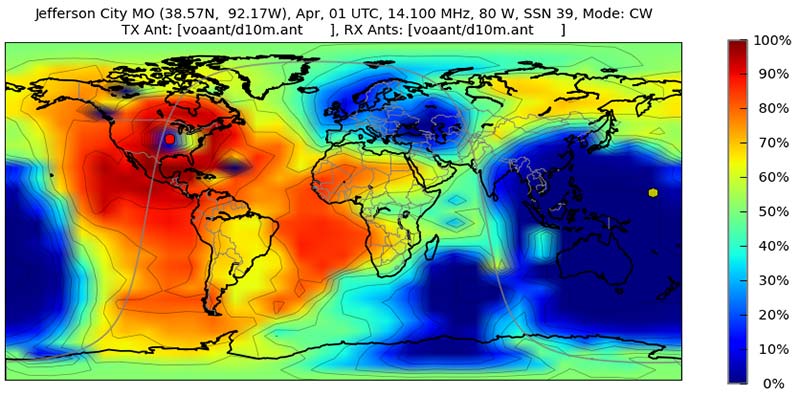
FIGURE 2. VOACAP Online coverage map from Missouri at 8 PM in April on the 14 MHz amateur band for stations using half-wave dipole antennas at a height of 10 meters and CW (Morse code) or digital protocols. Coverage should be excellent across the Americas, west Africa, and much of the south Atlantic and eastern Pacific with current sunspot activity values.
Figure 3 shows the daily challenges of trying to maintain reliable communications between Missouri and Rio de Janeiro. If this kind of know-how can be automated, stations could stay in touch with each other by changing frequency.

FIGURE 3. VOACAP Online prediction chart for circuit reliability between Missouri and Rio de Janeiro with the same stations and solar activity as in Figure 2. The heavy black line represents the MUF (Maximum Usable Frequency) at which communications is possible 90 percent of the time.
The next challenge to be overcome is that the available channels for marine stations are shared. You can’t just transmit until you get through. First, you must listen to see if another contact is taking place. If so, you figure out what type of signals are present and what type of modulation and protocol they are using. Then, you wait until the contact is concluded and make an initial transmission.
You might transmit at the same time as another station that was also waiting, so there are ways of negotiating who can “go first.” Finally, you listen for a response from the desired station and if conditions will support the desired contact.
Military organizations developed the Automatic Link Establishment (ALE) protocol to establish a connection automatically (en.wikipedia.org/wiki/Automatic_link_establishment). Test transmissions to the desired station are made on a sequence of channels at different frequencies until a response is received or the calling station gives up. (ALE is found in ham radio to a limited degree as well, but hams mostly don’t operate on fixed channels, so it isn’t widely used.) This process can take up to 30 seconds for each contact — not quickly enough for commercial data services.
Toni learned all this during his college years, and finally the idea of an automated network of stations came together around 2010. He realized that ham radio had solved the footprint problem through frequency agility based on propagation models. Could this be turned into a workable system of automated stations moving around the oceans?
Cognitive Radio
What Toni was imagining is referred to as cognitive radio (en.wikipedia.org/wiki/Cognitive_radio). Cognitive stations are smart enough to select a channel and protocol, avoid other users, establish contact with a desired station, and release the channel. This is also called dynamic spectrum management and it allows many users to share limited spectrum.
The most active area for cognitive radio development today is in “white space” or unused or lightly used spectrum. For example, there are many TV channels -- each 6 MHz wide -- that are unused in any particular area. The IEEE 802.22 standard describes how stations can utilize these channels by knowing their location and using a table of available channels in that location.
In Toni’s case, he became aware of a cognitive radio group at the University of Oulu (Finland) that is very active in developing technology at VHF and UHF (www.oulu.fi/cwc). Making better use of available spectrum is a very active topic in today’s wireless industry.
Hams have been “doing” cognitive radio for a century! We are allocated certain bands throughout the spectrum (from long-wave frequencies through microwaves) and with few rules, expected to share them through flexibility and skill. If you want to hear the ham version of cognitive radio, tune through the 40-meter band some weekend evening when voice, data, and Morse stations are all active and trying to make contacts (7.0–7.1 MHz is particularly good).
You might hear digital stations exchanging email, voice stations having a “round table,” and Morse stations in a radiosport event — all at the same time. Each station tunes to find a clear frequency or moves around the band establishing contact, then signs off to allow others to use the frequency. It’s relatively easy for a human operator but surprisingly difficult to automate.
Automated Receiver Networks
Another piece of the puzzle is moving from a static model that predicts propagation to knowing what is actually happening when the stations need to communicate. That colorful chart in Figure 3 is only statistics. Toni’s experience on the air made it clear that just relying on the models was not enough for mobile and maritime stations moving around the globe. Each station needs to know whether there is a communication path and, if not, figure out a way to get the data through.
About the time Toni was imagining his system, another batch of ham radio innovations took place: automated receiver networks. Hams had long used beacons (automated transmitters on known frequencies) to determine whether a band was “open” to the beacon location. However, each beacon had to be monitored and tuned in each time. A mashup of new technologies turned that process on its head, creating “reverse beacons.”
The availability of PCs with high-performance sound cards and CPUs enabled Alex Shovkoplyas VE3NEA to develop CW Skimmer in 2008 (www.dxatlas.com/cwskimmer). While single-signal “code readers” had been around a while, a “skimmer” could decode Morse code on many channels at once. Suddenly, a single automated receiver could decode and display dozens of Morse signal call signs and measure their signal-to-noise ratio (SNR) — as many as 700 signals if a wideband receiver is used.
Quickly, the rapidly deploying “skimmers” were integrated into what has become known as the Reverse Beacon Network (RBN; www.reversebeacon.net). Soon the technology was extended to other digital signals, such as radioteletype, PSK (pskreporter.info), and an ultra-low power beacon mode, WSPR (wsprnet.org/drupal). These receivers often captured and decoded signals in one brief transmission — far faster than ALE systems.
Finally, all the pieces were in place for Toni’s vision to come true. He formed KNL Networks and began assembling the technical experts to design the hardware and software. It took more than four years for KNL to mature and make a sale. As of 2015-2016, the KNL system has achieved pole-to-pole coverage — no “dark” areas — and has grown to a staff of 42, half of whom are engineers.
In a further nod to ham radio, Toni downloaded data from the RBN archives and analyzed the published logs from competitors in the CQ World-Wide DX Contests (cqww.com) to validate the KNL propagation software. (CQ WW contests are some of the largest sporting events on earth, with more than 30,000 individual call signs active during the two-day contest period.)
The KNL System
The traditional model for maritime communication systems is for powerful shore stations to manage ships at sea using fixed channels. In the KNL network, though, every station can operate as a base station if it has a connection to the Internet. This creates a global mesh network that grows with the number of users, avoiding congestion and outage problems associated with using master stations.
On board each vessel, special hardware digitizes the entire HF spectrum from 1.5 to 30 MHz in 1/2 Tbyte gulps. This allows each station to develop a real time model of the ionosphere. Real time propagation data “changes everything,” in Toni’s words.
Responding faster than the RBN, a short 100 msec signal is sufficient for the KNL system to assess a channel. This allows the system to make a smooth transition from ground-wave or VHF channels while near land to long-distance “skywave” channels at sea.
As a bonus, continuous spectrum sampling uncovers persistent usable signal paths not predicted by the usual statistical models. Active hams know to listen for (and delight in!) unusual paths that “shouldn’t be there” — late-night, gray-line, over-the-pole, long-path, skew-path. If a station is transmitting, the RBN and KNL networks will hear them. And because it is assessing conditions at all times, the KNL system can react quickly if a solar flare or coronal mass ejection (CME) suddenly cause a geomagnetic disturbance or storm that would shut down traditional systems for hours or days.
This must take racks and racks of gear, right? You can see a KNL radio in Figure 1 while Figure 4 gives a block diagram of what the overall onboard system looks like. The actual RF part of the system (specified in Table 1) is quite modest as maritime HF radio goes. The high-bandwidth processing power provides reliable communication with much lower power than a less-flexible system.
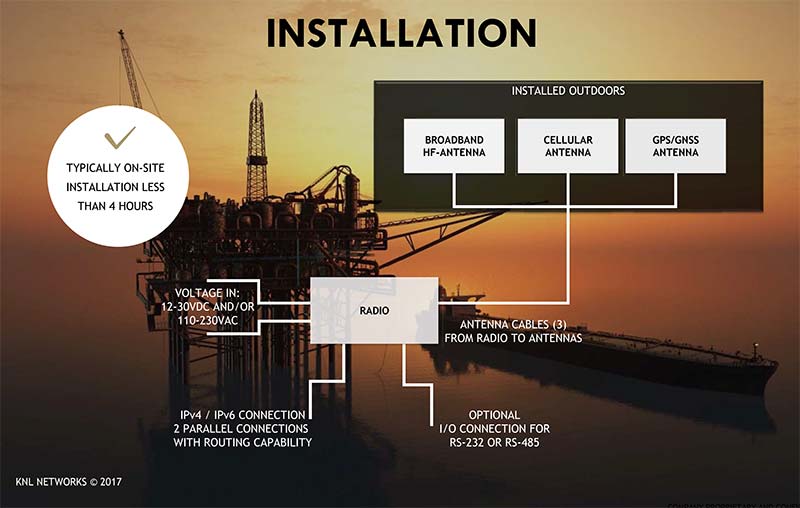
FIGURE 4. The typical KNL installation consists of a single radio package (see Figure 1) and three antennas for HF, 3G mobile phone systems, and GPS. (Graphic courtesy of KNL Systems, LLC.)
| Frequency range: |
1.5 – 30 MHz (200 – 10-meter wavelengths) |
| Signal bandwidths: |
875 Hz, 3 – 6 – 12 and 24 kHz |
| Mean and peak transmit power: |
50 and >200 W |
| Modulation: |
BPSK, QPSK, 8PSK, 16- 32- 54- 128- and 256-QAM |
| Symbol rates: |
1500, 2400, 4800, 9600, 19200 baud |
| Antennas: |
Ground-plane omnidirectional verticals |
Table 1 – KNL Radio Specifications
Once a signal path has been confirmed, the radios can’t waste time setting up a protocol. We’ve all heard landline modems going through a lengthy “training sequence” as they establish the best parameters for modulation and the signaling protocol. The ionosphere changes far too fast for that, so the KNL training sequence has been pared down to 500 msec.
In keeping with the cognitive radio philosophy, KNL’s system is not granted exclusive access to any HF spectrum. It is always a “secondary user” obligated to not cause interference to and to accept interference from the primary users.
Does the system provide enough bandwidth to support the needs of commercial users? Yes, it does and it can support multiple users, each with its own “pipe.” Typical maritime data needs while at sea are not high bandwidth, relating mostly to position, cargo status, maintenance, and performance sensors, fuel consumption, and emission control. While in port, the radios shift to higher bandwidth data streams over 3G mobile phone systems.
Figure 5 is an example of communication among ships and shore offices. The cruise ship Hebridean Sea above the Arctic Circle and off the coast of Spitzbergen (top) has no connection to the harbor (AECO) Internet system or to satellite systems at this high latitude. To send email, the cruise ship’s radio establishes an HF connection to a second ship acting as a base station in the Reykjavik harbor where the email is automatically streamed over a local 3G connection to the Internet.
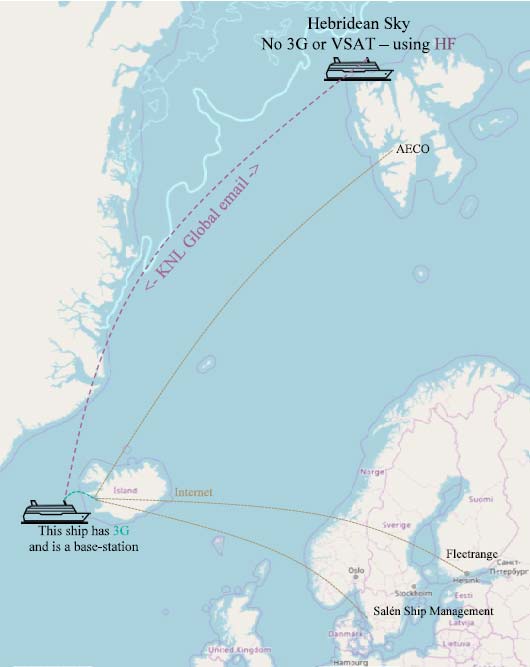
FIGURE 5. Example of data being passed over HF from a cruise ship (top) out of contact with land stations to another cruise ship in a harbor (lower left), where it is automatically streamed over a local 3G mobile phone connection to the Internet. Data can be exchanged with the cruise line HQ in Sweden or to a fleet management system in Helsinki. (Graphic courtesy of KNL Systems, LLC.)
In addition, other data can be relayed to the cruise ship headquarters in Sweden or to KNL’s fleet manager system in Helsinki.
When doing anything new, there are regulatory hurdles to overcome. The KNL radios use a new type of signal called an emission type on existing channels with many users. That means the regulatory agencies didn’t have testing and approval protocols in place. It took a lot of work but the fixed, mobile, and marine communications standards were modified or extended and type-approval is now in place.
Ham Radio and Professional RF
Toni has come a long way from his first CB radio talking with his buddies and working “skip” DX. I asked him what he could offer younger hams in the way of career advice.
“Be open-minded about what you want to be and grow into other careers. Ham radio really provides a wide background in electronics and radio. This allows you to grow and move within or between industries very easily.
“Don’t underestimate the network value of amateur radio which is world wide and very deep. The word ‘amateur’ sounds undervalued, but ham radio provides a lot of background and impact. Use the network of people you’ll connect with. They have many skills and capabilities you can work with. There is a very big community of ham radio operators and they have many resources!”
Toni’s experience parallels that of myself. At first just a technical hobby in the basement, ham radio has guided me through a multi-faceted career in engineering, teaching, and writing. I have a world-wide network of friends and colleagues. And I’m having a lot of fun! NV

